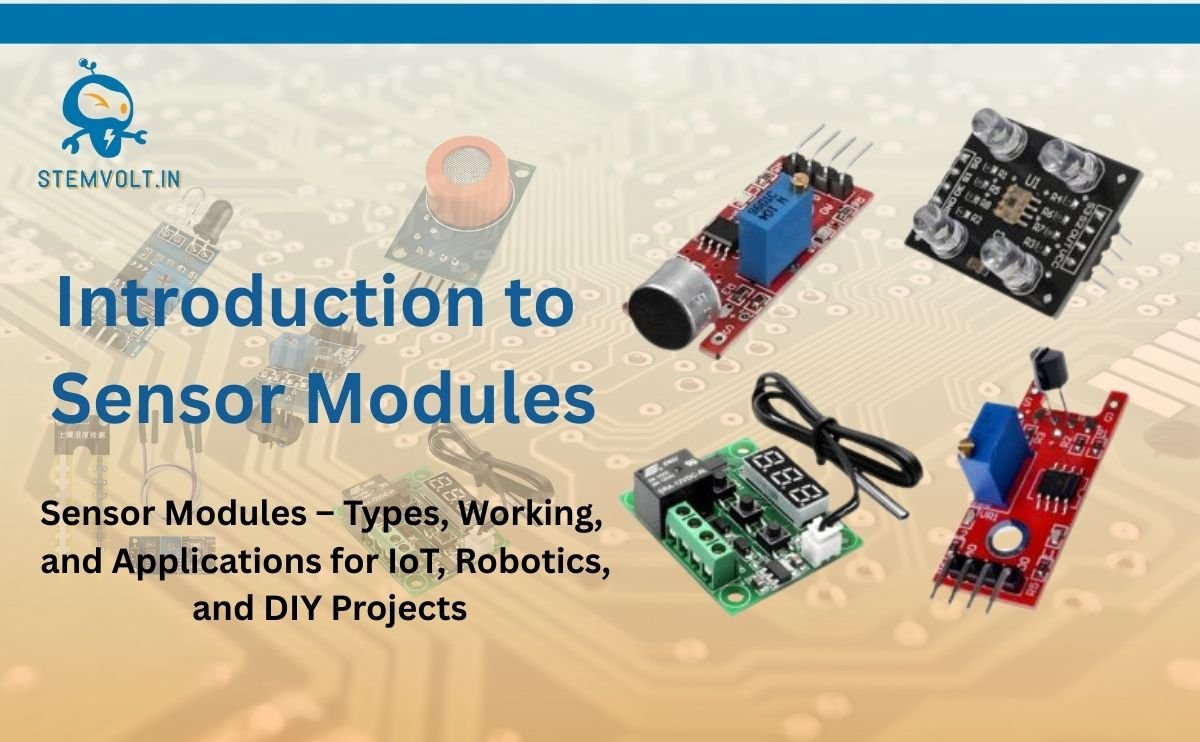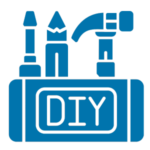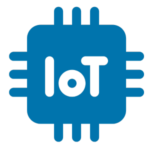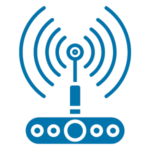Sensor Modules in Electronics: Types, Working & IoT, Robotics Uses | StemVolt

What is a Sensor Module?
In today’s technology-driven world, sensor modules are everywhere – from the phone in your pocket to industrial machines. A sensor module is an electronic device that detects changes in the environment, such as temperature, light, motion, or gas, and converts them into electrical signals. These signals can be read and processed by controllers like Arduino, Raspberry Pi, or ESP32 to perform specific tasks.
Whether it’s a robot detecting an obstacle, a weather station tracking humidity, or a smart home turning lights on automatically, sensor modules make it possible.
Common Types of Sensor Modules
1. Temperature & Humidity Modules
- Examples: DHT11, DHT22, LM35
- Where They’re Used: Weather stations, greenhouse automation, HVAC control
2. Light & Color Modules
- Examples: LDR Light Sensor, TCS3200 Color Sensor
- Where They’re Used: Automatic lighting systems, smart street lights, industrial sorting
3. Motion & Proximity Modules
- Examples: PIR Motion Sensor, HC-SR04 Ultrasonic Module
- Where They’re Used: Security alarms, obstacle avoidance robots, touchless doors
4. Gas & Air Quality Modules
- Examples: MQ-2, MQ-135
- Where They’re Used: Pollution monitoring, LPG leak detection, air quality control
5. Force & Pressure Modules
- Examples: Load Cell with HX711, Force Sensitive Resistor (FSR)
- Where They’re Used: Digital weighing machines, robotics grippers, industrial machines
How a Sensor Module Works
While each type of sensor operates differently, most follow the same basic process:
- Sensing: Detect a physical change (heat, light, movement, gas, etc.).
- Signal Conversion: Convert that change into an electrical signal – analog or digital.
- Processing: Send the signal to a microcontroller for decision-making.
- Action: Trigger a response like turning on a motor, lighting an LED, or sending data to the cloud.
This chain of events transforms real-world inputs into useful, automated actions.
Sensors with Arduino – Practical Example
One of the easiest ways to understand sensor modules is by connecting them with Arduino. For example, the DHT11 temperature and humidity sensor can be easily interfaced with an Arduino UNO to measure real-time weather data. The Arduino reads the sensor’s data and can display it on an LCD screen or send it to an IoT platform for monitoring.
Basic Connection Steps:
Connect the DHT11 sensor’s VCC pin to Arduino 5V
GND pin to Arduino GND
Data pin to Arduino digital pin (e.g., D2)
Sample Code Snippet:
#include “DHT.h”
#define DHTPIN 2
#define DHTTYPE DHT11
DHT dht(DHTPIN, DHTTYPE);
void setup() {
Serial.begin(9600);
dht.begin();
}
void loop() {
float h = dht.readHumidity();
float t = dht.readTemperature();
Serial.print(“Humidity: “);
Serial.print(h);
Serial.print(” %\t”);
Serial.print(“Temperature: “);
Serial.print(t);
Serial.println(” *C”);
delay(2000);
}
Applications of Sensor Modules
Sensor modules are found in countless real-world applications:
- IoT Devices: Smart homes, energy monitoring, connected appliances
- Robotics: Navigation systems, line-following robots, collision prevention
- Environmental Monitoring: Weather data logging, pollution detection
- Industrial Automation: Quality control, safety systems, process optimization
- Medical Devices: Health monitoring, patient safety systems
Choosing the Right Sensor Module
Selecting the right sensor depends on:
- Project Goal: What do you want to measure or detect?
- Environment: Indoor, outdoor, industrial, or lab setup?
- Interface: Compatible with your controller (Arduino, Raspberry Pi, etc.)
- Accuracy & Range: How precise and sensitive should it be?
Why Buy Sensor Modules from StemVolt?
At StemVolt, we know that choosing the right sensor is only half the battle – getting a reliable one is the other half. That’s why every sensor module we offer is tested for accuracy, durability, and compatibility with popular development boards.
Why makers across India trust StemVolt:
- Wide selection of modules for all project needs
- Competitive pricing for students & professionals
- Fast delivery across India
- Expert guidance for beginners and advanced users
👉 Explore our full range of [Sensor Modules here]
Final Thoughts
From school robotics kits to advanced automation systems, sensor modules are the unsung heroes that give machines the ability to “sense” the world. They bridge the gap between the physical and digital, turning ideas into working, responsive devices.
If you’re looking to start a project, upgrade your lab, or simply explore the world of IoT and robotics, a good set of sensor modules is the perfect starting point. And with StemVolt’s range of high-quality, tested modules, you can build with confidence.
Conclusion
Sensor modules are essential for building interactive electronics and intelligent machines. They bring life to IoT devices and enable robotics projects to sense and adapt to the real world. Whether you are designing a simple school project or working on an advanced automation system, choosing the right sensor module is critical.
With StemVolt, you get reliable, affordable, and tested modules that help turn your ideas into reality.













